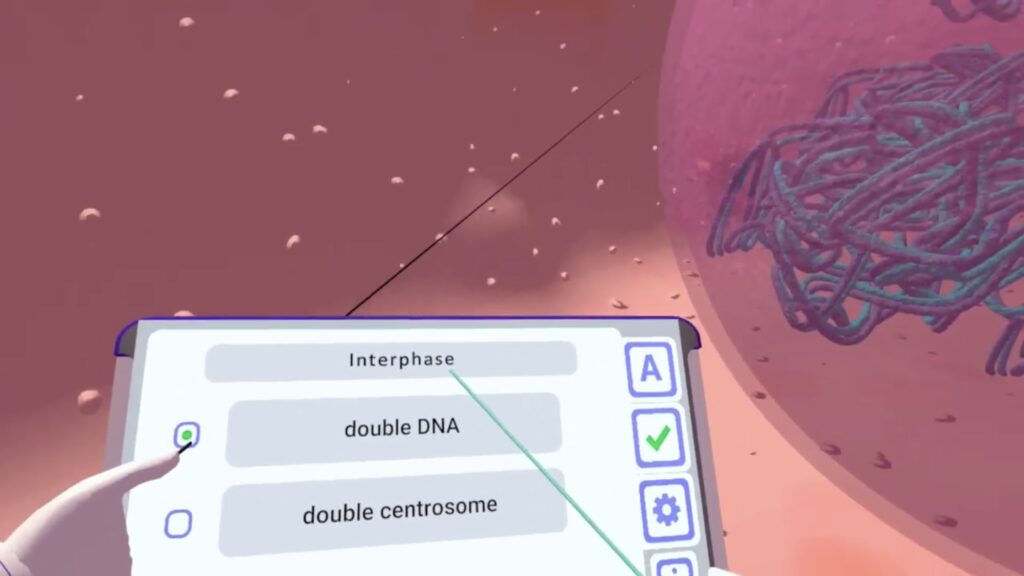

In today’s rapidly evolving world, technology plays a pivotal role in shaping the our children learn and engage with educational content. Traditional teaching methods are giving way to innovative approaches that make learning more interactive and enjoyable. One such innovation is virtual reality (VR) in education, which is transforming the way students experience STEM subjects—Science, Technology, Engineering, and Mathematics.
Virtual reality education brings abstract concepts to life, allowing students to immerse themselves in environments that were previously inaccessible. Instead of passively reading about scientific theories or mathematical concepts, students can now actively participate in experiments and explorations within a digital classroom. This hands-on approach not only enhances understanding but also increases engagement and retention.
VR in the classroom leverages gamification—the application of game-design elements in non-game contexts—to learning. By incorporating game mechanics such as points, levels, and rewards, education becomes a fun and motivating experience. Students are more likely to be enthusiastic about learning when it feels like play.
At XReady Lab, we’re passionate about making STEM education accessible and enjoyable for students. Our VR learning solutions are designed to transform traditional lessons into interactive adventures. Here are some examples of how we gamify STEM subjects:

Rather than memorizing facts about planets and celestial bodies, students embark on a space mission where they must customize their spacesuit parameters for landing on different planets. They consider factors like atmosphere, temperature, and gravity to ensure a safe landing. This immersive experience teaches them about planetary science and physics in an engaging way.

In studying human biology, students don’t just look at diagrams of organs. Instead, they dive into the respiratory system alongside a virtual robot friend. Together, they send gas molecules—oxygen and carbon dioxide—in the right directions by hitting them with virtual rackets. This interactive activity helps them understand the gas exchange process in a memorable and enjoyable manner.

Cell division can be a complex topic, but by diving inside a cell, students take on the role of a cell engineer. They perform tasks such as piercing the nuclear envelope and dragging the centrosome to the other pole of the cell. By actively participating in the stages of mitosis, they gain a deeper understanding of the process.
Integrating virtual reality in schools doesn’t have to be a daunting task. XReady Lab offers comprehensive solutions to help schools adopt this technology seamlessly. Our VR education platform is compatible with various VR headsets for schools and comes with support for educators to get started.
WeOur simulations are curriculum-aligned, ensuring that they complement your existing lesson plans. We focus on creating content that not only meets educational standards but also excites and inspires students.
Experience the future of education with XReady Lab. We invite educators to explore our virtual reality classrooms and see firsthand how gamifying STEM can transform learning.
👉 Request your free demo today!
The integration of virtual reality technology in education represents a significant advancement in how we teach and learn. By gamifying STEM subjects, we’re making education more engaging, interactive, and effective. Students are not only learning essential concepts but also developing a lifelong love for exploration and discovery.
VR learning is more than a trend; it’s a powerful tool that has the potential to revolutionize education. At XReady Lab, we’ve already brought these innovative experiences to over 700 schools worldwide.
Frequently Asked
We prodive VR biology, VR physics, and VR chemistry simulations. Please, check our catalog.
Please, fill the form to get demo labs for free.
Please contact our customer support service at support@xreadylab.com or book a call with the team to find out the conditions and book the VR class set up at your school.
Subscription to XReady Lab interactive VR labs. If you are a school, then you are also given access to the VR classroom system. VR class system helps you easily launch VR lessons for a large number of students, follow the experience of each student, as well as customise the content without developers.
We adhere to the world’s generally accepted recommendations and research. Our products are suitable for children from 12 years old.